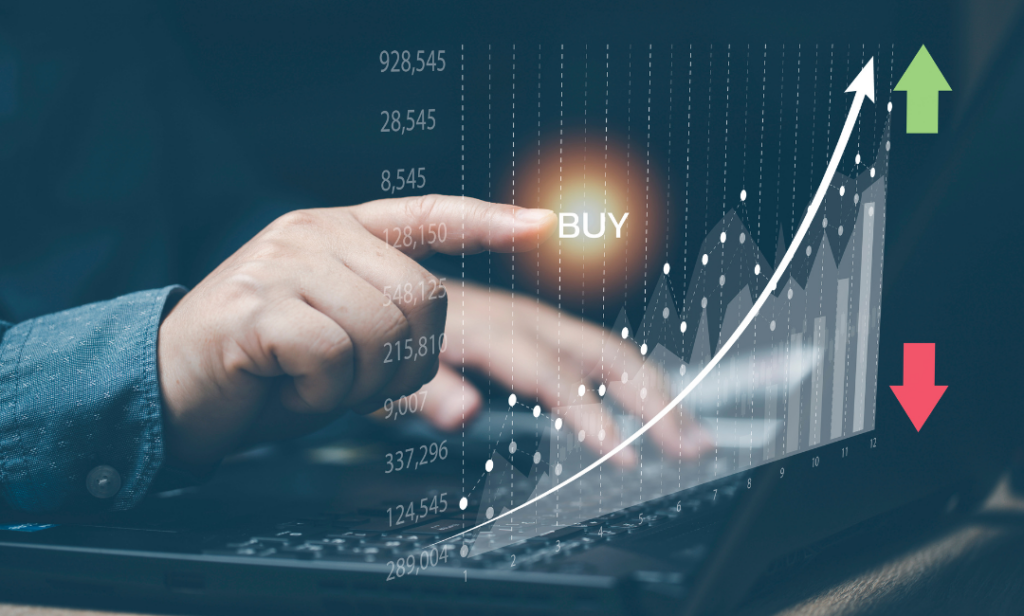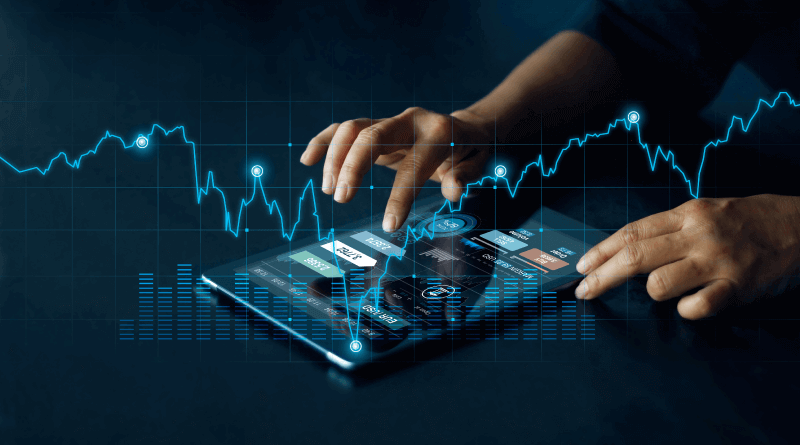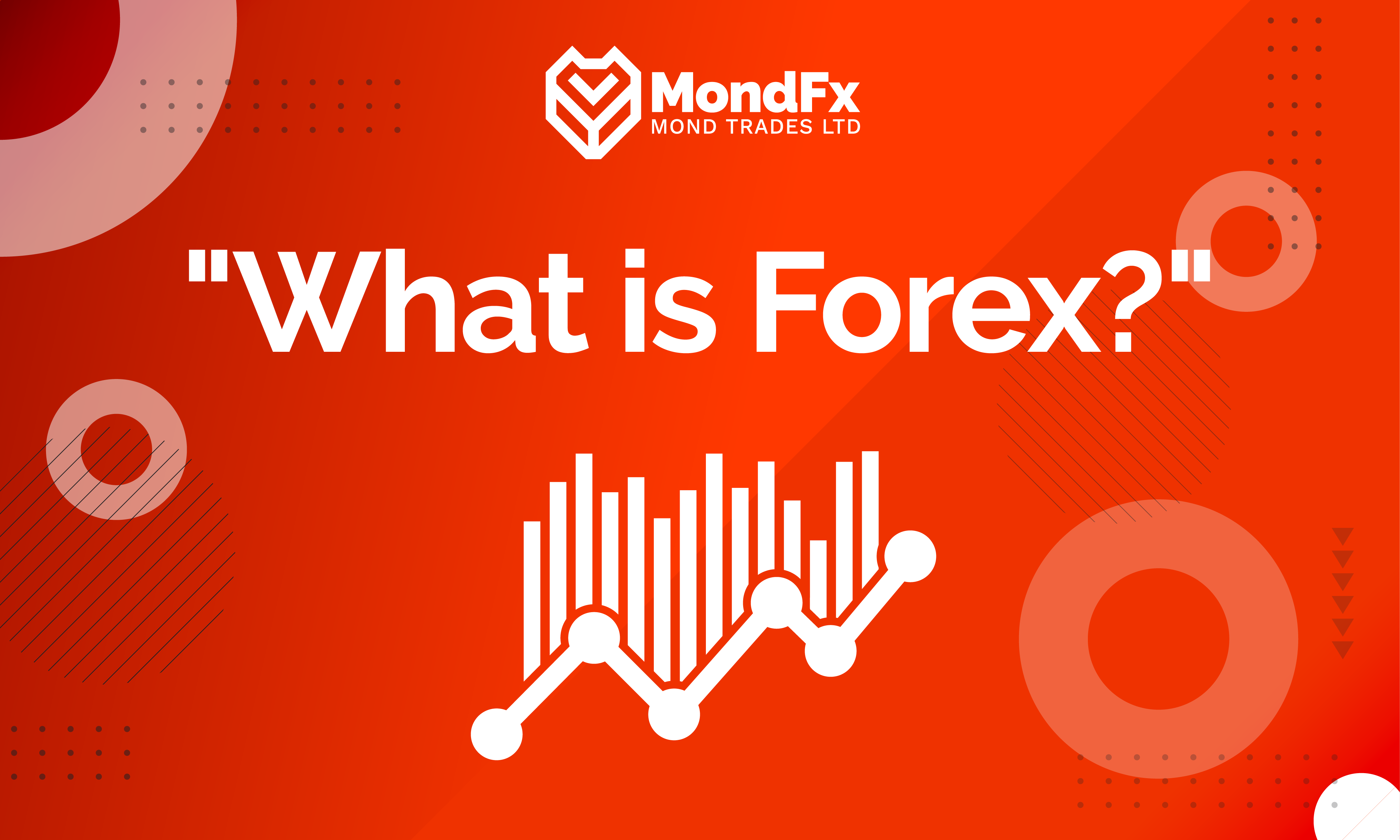Forex stands for Foreign Exchange Market. This market is considered the largest financial market in the world and its daily trading volume reaches trillions of dollars. In Forex, you can buy and sell different currencies such as US Dollar, Euro, Japanese Yen, British Pound, etc. The main goal in forex is to profit from exchange rate fluctuations. In other words, you buy a currency at a low price and hope to sell it at a higher price in the future and make a profit from this price difference.
History of forex money and money exchange
Money has long been the pillar of trade and commerce. Early societies met their needs through commodity-to-commodity trade, but over time, the concept of money as an intermediary commodity to facilitate exchanges was formed. Forex (foreign exchange market) is also a market where different currencies are traded with each other. In this blog post, we will examine the history of money, the concept of money exchange, and finally, the formation of the forex market.
The origin of money
The origin of money is not exactly known, but archaeologists have found evidence of the use of commodities such as shells, precious stones and metals as money in early societies. These goods were accepted as a suitable tool for trade due to their durability, transportability and rarity.
Money Exchange
With the expansion of trade and communication between different societies, the need to exchange money from one type to another emerged. The money changers were the first to do this. Considering the inherent value of different currencies, they determined the parity rate and exchanged the currencies.
The formation of the forex market
With the passage of time and the complexity of business exchanges, the forex market was born. This market provides a platform for individuals, companies and governments to electronically trade different currencies with each other. Forex is a global market that operates around the world 24 hours a day. Money exchange and the forex market play an important role in facilitating international trade and financial communication between the countries of the world. Understanding the origin of money and how the forex market was formed can help to form a better understanding about the functions of the global economy.
How to trade in forex?
Trading in forex is done through online brokers. These brokers provide you platforms that you can use to buy and sell currencies online.
To enter the world of forex, it is necessary to acquire the necessary knowledge and skills. Understanding basic concepts such as currency pairs (e.g. EUR/USD), leverage and margin is of great importance. Also, technical and fundamental analysis is necessary to predict fluctuations and make correct decisions in transactions.
Advantages and disadvantages of forex
Like any other financial market, forex has its pros and cons. Its advantages include high liquidity, the possibility of trading 24 hours a day, 5 working days a week, and the potential to earn high profits. But on the other hand, the high risk of transactions and possible losses are considered as disadvantages of forex.
Advantages of trading in forex
Global and permanent market: Forex is a decentralized market that operates 24 hours a day, five working days a week. This feature gives traders high flexibility to buy and sell currencies at any hour of the day and night when they see the right opportunity.
**High Liquidity:** The volume of transactions in the forex market is very high, and for this reason, you can easily open and close your trading positions. High liquidity reduces the risk of getting stuck in inappropriate transactions.
Leverage: Many forex brokers allow traders to use leverage. Leverage means that you can trade a larger volume of a currency with less capital. This feature can lead to significant profits, but at the same time, it also increases the risk of loss accordingly.
Low Fees: Forex trading fees are usually lower compared to other financial markets. This issue increases the profitability of transactions for the trader.
Disadvantages of Forex trading
High market risk: The forex market is very volatile and currency prices can change quickly. This high volatility can lead to significant losses for traders, especially if they do not use proper risk management.
Need for knowledge and expertise: To be successful in forex trading, it is necessary to have deep knowledge and understanding of the factors affecting exchange rates, as well as mastering technical and fundamental analysis. Without this knowledge and skills, entering the forex market carries a high risk.
Counterparty risk: In forex trading, you deal with a brokerage or broker. If the brokerage faces financial problems, your capital may be at risk. For this reason, it is very important to choose a reliable and experienced broker.
Addiction to trading: The excitement of profiting in forex trading can lead to over trading. This can lead to heavy losses. Having a specific trading strategy and sticking to it is essential to control this excitement.
The forex market can provide traders with good opportunities to earn profits. But don’t forget that this market is also associated with high risks. Before entering this market, be sure to be realistic about your knowledge and skills, get enough training, develop a proper trading strategy and properly follow risk management.

Why is the forex market so attractive?
- High liquidity: Liquidity refers to the ease and speed of exchanging assets with cash. The forex market has unparalleled liquidity. The average daily trading volume in this market exceeds 6 trillion US dollars. This high trading volume ensures that you can easily enter or exit a trading position without worrying about affecting the currency price.
- Easy access: Forex is much easier to access compared to other financial markets. The minimum capital required to start trading in forex can be very low and even with small amounts you can enter this market. Also, with the expansion of online trading platforms, access to the forex market has become much easier for the general public than before.
- Trading Leverage: Trading leverage is a tool that allows traders to have the potential to earn more profit (or loss) with less capital. Of course, it should be noted that the use of leverage significantly increases the risk of transactions, and it is necessary for traders to use this tool with caution and sufficient knowledge.
- 24-hour market: Unlike many financial markets that have specific working hours, the Forex market operates 24 hours a day, 5 days a week. This feature gives traders the flexibility to trade at any hour of the day or night that suits them.
- Market diversity: In the forex market, it is possible to trade on a wide range of different currencies. This diversity allows traders to choose the right currencies for trading based on their strategy and risk tolerance.
Factors affecting the volatility of the forex market
The forex market is influenced by various factors that affect the value of currencies and, as a result, their price fluctuations. Below are some of the most important factors:
Supply and demand: Like any other market, the price of currencies is also determined by the influence of their supply and demand in the world market. Political, economic and social events can affect the supply and demand of a particular currency and lead to an increase or decrease in its value. For example, if there is positive news about a country’s economy, the demand for that country’s currency will increase and, as a result, its value will rise.
Interest rate: The central banks of countries affect the inflation rate and liquidity in the economy of that country by setting the interest rate. In general, an increase in the interest rate of a country makes foreign investors more willing to invest in that country in order to earn more profit. This increase in demand for that country’s currency causes its value to rise.
Inflation: Inflation means a continuous increase in the general level of prices in an economy. Rising inflation reduces the purchasing power of currency. Therefore, any country that faces higher inflation is likely to see its currency depreciate.
Political and economic stability: Political events and social unrest in a country can drive away investors by creating risk and uncertainty. The withdrawal of investors from a country reduces the demand for that country’s currency, and as a result, its value decreases. On the contrary, the political and economic stability of a country can increase the demand for that country’s currency by attracting foreign investments and, as a result, increase its value.
Government interventions: Governments sometimes intervene in the forex market to control the value of their currency. These interventions can be done through buying or selling currency by the central bank.
Operators and main players of the forex market
The forex market, as the world’s largest financial market, is governed and directed by a wide range of players. These players are generally divided into two main categories:
- Institutional players:
Central banks: Central banks are the most important players in the forex market. They buy and sell their foreign exchange reserves to manage their exchange rate and intervene when necessary to stabilize the market.
Commercial banks: Commercial banks play an important role in facilitating foreign exchange transactions for their customers. They are also active in the forex market to manage their currency risks.
Large financial institutions: Large financial institutions such as investment funds, insurance companies and money-traded funds carry out a significant volume of transactions in the forex market.
- Non-institutional players:
Retail traders: Retail traders include real people who trade independently in the forex market.
Forex brokers: Forex brokers act as intermediaries between traders and the market and provide them with a trading platform.
Multinational companies: Multinational companies need currency exchange to carry out their international transactions, and for this reason, they are active in the forex market.
Alongside these main players, a range of other players, including speculators, algorithmic traders and liquidity providers, are also present in the forex market and fuel its price volatility.
The role of each of these players is important in determining the price of currencies and the fluctuations of the forex market. The complex interactions between these players, as well as economic, political and social factors, determine the dynamism and continuous movement of this market.
Risks of investing in forex
One of the most important risks of investing in forex is the extremely volatile nature of this market. The value of currencies is constantly changing under the influence of several factors, including political, economic, social events and even natural disasters. Accurately predicting these fluctuations is a very difficult task due to the inherent complexities of the market. Investors in forex always face the risk of significant losses due to unexpected movements in currency prices.
High leverage, a risk aggravating factor
One of the key features of Forex trading is the possibility of using leverage. Leverage means that the investor can enter the market with an amount less than the total value of the transaction. While the use of leverage can lead to large profits, it also significantly increases the risk of loss. With a sudden movement of the currency price against the predicted direction, the investor may lose his entire capital and even more.

The need for sufficient knowledge and experience
The forex market is a complex market, the success of which requires sufficient knowledge and experience in the field of technical and fundamental analysis. Understanding macroeconomic concepts, geopolitical events and how they affect currency fluctuations is essential for making informed trading decisions. Investors without sufficient knowledge and experience can easily fall into the trap of heavy losses.
Risk of fraud and illegal activities
Unfortunately, the forex market is not immune to illegal activities and fraud. Some forex brokers lure investors with promises of astronomical and guaranteed profits. Also, the existence of fake trading platforms and illegal activities of transferring and withdrawing funds are other potential risks that investors face in this market. The necessity of choosing a reliable and licensed broker is very important to ensure the security of capital and soundness of transactions.
Dealing addiction and managing emotions
Emotional and unplanned trading is one of the common mistakes of investors in the forex market. The excitement caused by getting initial profits or the fear of loss can lead to irrational decisions and ultimately, financial losses. Proper management of emotions and having a specific and applicable trading strategy are considered as pillars of success in this market. Some people may also become addicted to trading and without considering the risk, they are constantly buying and selling currency, which can lead to irreparable consequences.
Despite its attractiveness, the forex market is a risky market and investing in it is not recommended for the general public, especially people who do not have enough knowledge and experience. Before entering this market, fully understanding its nature, understanding potential risks and the necessity of training and gaining experience are essential requirements. Investors should realistically look at the potential of profit and loss in this market and enter into the transaction only with capital that the loss of which will not disturb their financial life.
Exchange rate risk
Exchange rate risk occurs when the value of the currency exchanged in a transaction changes between the time of agreement and the time of settlement. This change can be for the benefit or loss of one of the parties to the transaction. For example, suppose an Iranian company plans to buy raw materials from another country for 1000 euros. At the time of agreement, the exchange rate of Euro to Rial is 10000 Tomans.
But if by the time of payment, the value of the euro against the rial increases by 10%, the Iranian company must pay 11000 tomans per euro to buy the same raw materials. In this case, the Iranian company suffered a loss equivalent to 1000 Tomans per Euro.
Types of exchange rate risk:
Exchange rate risk can be divided into two general categories:
Trading exchange rate risk: This type of risk is related to international transactions in which currencies are exchanged directly.
Translation exchange rate risk: This type of risk is related to multinational companies that operate in different countries. Exchange rate fluctuations can affect the value of their assets and liabilities in different countries and, as a result, affect their profitability.
Factors affecting exchange rate risk:
Several factors can affect exchange rate fluctuations and, as a result, exchange rate risk. Some of the most important factors are:
Difference in interest rates: Interest rates in different countries are one of the main factors in determining exchange rates. A country with a higher interest rate will usually have a stronger currency.
Political and economic stability: Political and economic stability in a country can increase investors’ confidence in that country’s currency and, as a result, raise its value.
Inflation: High inflation in a country can reduce the purchasing power of that country’s currency and, as a result, lower its value.
Geopolitical events: Geopolitical events such as war, embargo or natural disasters can increase exchange rate fluctuations by creating uncertainty in the market.
Supply and demand: Like any other commodity, the value of currencies is also determined by their supply and demand in the world market.

Exchange rate risk management solutions:
To manage exchange rate risk, there are various methods, some of the most important of which are:
Use of derivative instruments: Derivative instruments such as futures and options can be used to hedge exchange rate risk in international transactions.
Diversification of the investment portfolio: Investing in assets with different currencies can help reduce exchange rate risk in the investment portfolio.
Choosing a reliable broker: It is very important to choose a reliable and licensed broker to ensure the security of capital and the health of transactions in the forex market.
Exchange rate risk is a reality that economic operators and investors face in international trade. By understanding the nature of this risk, knowing its types and using appropriate strategies to manage it, it is possible to largely avoid the losses caused by exchange rate fluctuations.
Interest rate risk
Interest rate risk, in short, means the possibility of losses due to changes in interest rates over time. This risk occurs when the value of a financial asset or financial obligations is affected by interest rate fluctuations. For example, suppose an investor has invested in a bond with a fixed interest rate of 10%. If interest rates in the market generally increase, the bond value of this investor will decrease. Because new investors can buy new bonds with a higher interest rate, and as a result, the demand for bonds with a fixed interest rate decreases.
Types of interest rate risk
Interest rate risk can be divided into two general categories:
Interest rate risk on assets: This type of risk is related to assets such as bonds, stocks, and real estate. Fluctuations in interest rates can affect the value of these assets.
Interest rate risk on obligations: This type of risk is related to financial obligations such as loans and convertible bonds. Fluctuations in interest rates can affect the cost of financing these obligations and, as a result, the profitability of companies.
Factors affecting interest rate risk
Several factors can affect interest rate fluctuations and, as a result, interest rate risk. Some of the most important factors are:
Central bank monetary policies: Central banks influence interest rates in the macro economy through various tools such as interest rates on government bonds.
Economic conditions: Economic conditions, such as inflation, unemployment rates, and economic growth, can affect investors’ expectations of future interest rates and, consequently, current interest rates.
Geopolitical events: Geopolitical events such as war, sanctions or natural disasters can increase interest rate volatility by creating uncertainty in the market.
Market expectations: Investors’ expectations of the future interest rate play an important role in determining the current interest rate.
Interest rate risk management solutions
To manage interest rate risk, there are various methods, some of the most important of which are:
Use of derivative instruments: Derivative instruments such as futures contracts and options can be used to hedge interest rate risk in financial assets and liabilities.
Choosing assets with low sensitivity to interest rates: Investing in assets that are less sensitive to interest rate fluctuations, such as short-term bonds and stocks of fixed-growth companies, can help reduce interest rate risk in an investment portfolio.
Liquidity management: Correct liquidity management and timing of cash inflows and outflows can help reduce interest rate risk on companies’ financial obligations.
Complexity and the need for specialized knowledge
The forex market, with a daily trading volume of trillions of dollars, brings a world of opportunities and, at the same time, numerous challenges to investors. Along with the potential of making huge profits in this market, its inherent complexity and the need for specialized knowledge, as if two ruthless giants, are lurking in the path of newcomers and even experienced traders.
The inherent complexities of the forex market:
Multiple factors affecting the exchange rate: The value of currencies is constantly changing under the influence of a wide range of economic, political, social factors and even geopolitical events. Understanding and analyzing these factors and accurately predicting exchange rate fluctuations is not an easy task and requires sufficient knowledge and expertise in this field.
24/7 nature of the market: Unlike other financial markets, forex is active 24 hours a day, 5 days a week. This issue significantly increases the risk of transactions and requires constant monitoring of the market, real-time analysis of news and events, and the ability to make quick and accurate decisions at any hour of the day.
Providing a huge amount of information: The massive amount of data and information about exchange rates, economic news, analysis and expert opinions can be confusing and overwhelming for new traders. Choosing reliable sources, properly analyzing this information and making decisions based on valid data are key skills for success in this market.
Need for specialized knowledge
Mastery of technical and fundamental analysis: successful traders in forex must master two main types of analysis, i.e. technical analysis and fundamental analysis. Technical analysis examines charts and price patterns to predict the future trend of the exchange rate, while fundamental analysis examines macroeconomic factors, monetary and financial policies, geopolitical events, and other fundamental factors affecting the exchange rate.
Familiarity with trading tools and platforms: The variety of trading platforms and analysis tools in forex can be challenging for unfamiliar people. Mastery of a reliable platform, familiarity with various analysis tools and their correct use are essential for success in this market.
Risk management and trading psychology: The forex market has a high potential for losses due to extreme price fluctuations. Correct risk management, use of loss limits, keeping calm in critical situations and not making emotional decisions are key factors for survival and progress in this turbulent market.

Psychological stress: Forex traders’ nightmare
Trading in forex, due to its complexities, high risks and the necessity of constant focus and precision, can put significant psychological pressure on traders. Stress, anxiety, fear of loss and regret of missing opportunities are among the common psychological consequences in this market.
Fear of loss: Fear of loss is one of the greatest enemies of Forex traders. This fear can lead to emotional decisions, unplanned trades, and deviating from the trading strategy, which ultimately leads to more losses.
Regret of missing opportunities: Rapid and unpredictable market fluctuations sometimes make traders regret missing profitable opportunities. This regret can undermine a trader’s confidence and lead him to make wrong decisions.
Psychological stress caused by losses: losses in the forex market are inevitable. But how to deal with the loss and its management plays a key role in maintaining mental health and preventing disgust from transactions.
Addiction to trading: Some traders, due to the excitement of profit or fear of loss, are continuously buying and selling currency without a plan. This addiction can have irreparable consequences and affect the trader’s mental health and personal life.
Strategies to deal with mental stress:
Education and knowledge acquisition: The first step to deal with stress is to increase knowledge and awareness of the nature of the forex market, the factors affecting the exchange rate and methods of analysis and trading. The greater the trader’s knowledge and expertise, the more his self-confidence will increase and as a result, his stress and anxiety will decrease.
Risk management: using the loss limit, diversifying the trading portfolio, and not investing more than the financial capacity, are among the key strategies for risk management and reducing losses in the forex market.
Planning and discipline: Having a specific trading strategy and sticking to it can help reduce trader stress and anxiety. Also, managing time and doing transactions at certain hours prevents making emotional and hasty decisions.
Practice and Patience: Forex trading is a skill that requires practice and patience. Rushing to make a quick profit can lead to more losses. Traders must be patient, increase their knowledge and experience and become a skilled trader over time.
Social support: Talking to friends and colleagues who are experienced in the forex market, or even seeing a psychologist specializing in trading, can help traders deal with stress and anxiety and maintain their mental health.
The land of 24-hour opportunities
Contrary to popular belief, the “best time” to trade forex is not necessarily a specific time period during the day or night. Forex is a 24/7 market. While this feature provides high flexibility to traders, it also carries some risks.
Fact: The importance of overlapping trading sessions
Research shows that generally, when the trading sessions of the main markets, namely London, New York and Tokyo, overlap, the liquidity of the forex market is at its highest level. High liquidity means greater ease in entering and exiting the transaction and reducing extreme price fluctuations.
Overlap of London and New York 1:00 PM to 4:00 PM UTC ( ): This time frame is the most visited and most volume trading period in Forex. The simultaneous activity of the key players of these two important financial markets leads to increased liquidity and significant fluctuations in currency prices.
London-Tokyo Overlap 7-9am UTC): This period is associated with the simultaneous activity of Asian and European markets. Liquidity during this time frame is lower than the overlap between London and New York, but still provides good opportunities for traders with a more risk-averse mindset.
Fact: The importance of economic and political events
The timing of economic and political events around the world can have a significant impact on exchange rate fluctuations. The release of important economic reports, the holding of central bank meetings or unexpected geopolitical events can all create attractive trading opportunities at different hours of the day and night. Therefore, successful traders are not limited to the overlapping time frames of the markets, but also carefully monitor the calendar of economic and political events in order to benefit from the fluctuations caused by these events with full preparation.
Day trader
Day traders, as the name suggests, focus on making short-term trades during the course of a business day. Using technical analysis and chart analysis tools, they seek to identify opportunities to buy and sell currency in short periods of time such as minutes, hours, and a few hours at most.
At the beginning of each working day, these traders determine their trading strategy for that day by examining the market situation, economic events and analyzing price charts. During the day, they continuously monitor currency prices and market fluctuations, and by identifying specific price patterns, they buy and sell currencies in short intervals.
Swing trader
Unlike day traders, swing traders focus on medium-term time frames, from a few days to a few weeks. Using a combination of technical and fundamental analysis, they seek to identify medium-term trends in currency movements and profit from these trends.
After analyzing macroeconomic conditions, geopolitical events and checking the technical status of the desired currency, these traders enter into the transaction. They may hold long or short positions for days or even weeks to take advantage of medium-term market fluctuations.
The forex market is a diverse playing field that provides profit opportunities for traders with different trading styles. Knowing the types of traders and their characteristics helps investors to choose the right trading strategy according to their personality, risk tolerance and financial goals.
Buying and selling positions in the forex market: understanding the concepts and their application
The Forex market (Foreign Exchange Market) which is called “Forex” for short, is the largest financial market in the world where traders buy and sell different currencies with each other on a permanent basis. In this dynamic platform, understanding the concepts of “buying position” (Long Position) and “selling position” (Short Position) seems essential to make transactions and earn profit. This blog post examines the nature, application and important points surrounding these two key concepts in the forex market.

Buy position (Long Position)
Suppose you believe that the value of a particular currency will increase in the future. In this case, you can buy that currency (buy position). By adopting a buy position, you actually borrow currency from a forex broker and buy the desired currency. Then, when the value of the currency increased compared to the time of purchase, you can sell it and make a profit from the difference in the buying and selling rate.
For example, if you buy one US dollar for 10000 Tomans (buy dollar position), you actually owe 10000 Tomans to your broker. Now, if the value of the dollar increases to 11000 Tomans in the future, you can sell it and get a profit of 1000 Tomans. Finally, you will settle your debt to the forex broker (10000 Tomans).
Selling position (short position)
As opposed to a long position, consider a scenario where you predict that the value of a particular currency will decrease in the future. In this case, you can make a profit on the decrease in the value of that currency by taking a sell position.
The process of taking a sell position is that you borrow a currency you don’t believe in (the base currency) from a forex broker and then sell it. In the future, if your prediction is correct and the value of the currency decreases, you buy it at a lower price and return it to the broker (hedging the position). In this way, you make a profit from the difference between the initial selling price and the final purchase.
For a better understanding, suppose you sell one euro by borrowing from the brokerage and at a price of 15000 Tomans (Euro sell position). If the value of Euro decreases to 14000 Tomans in the future, you can buy a Euro at a lower price and settle your debt to the broker (15000 Tomans) with a cheaper purchase (14000 Tomans). In this example, you profited from the price difference of 1000 Tomans.
Leverage: One of the key features of forex trading is the possibility of using leverage. Leverage means that you can enter the market with less than the total value of the trade. While the use of leverage can lead to large profits, it also significantly increases the risk of loss.
Risk management: Forex is a volatile market and the value of currencies can change quickly. Therefore, correct risk management using tools such as stop loss to limit possible losses is of particular importance.
Market analysis: Before adopting any position, it is necessary to analyze the market and the factors influencing exchange rates, such as economic, political and social events. Having a specific trading strategy and sticking to it can also help you succeed in this market.
Difference in buying and selling fees: Keep in mind that forex brokers usually charge a fee for buying and selling currencies. Include this point in your profit and loss calculations.
The importance of forex training courses and the introduction of Fenefx as the best option
The forex market is a highly dynamic market and is influenced by many factors, including economic, political and social events. It is difficult to accurately predict these factors and the fluctuations caused by them, without a proper understanding of the concepts and trading tools. By providing the necessary knowledge and skills, Forex training courses help people to:
Get to know the nature of the forex market: these courses fully explain the 24-hour nature of the market, the factors affecting the exchange rate, the types of trading strategies and the risks in this market.
Learn technical and fundamental analysis: understanding price patterns, market trends and how to analyze them (technical analysis), as well as familiarity with macroeconomic factors and their impact on the exchange rate (fundamental analysis), is one of the pillars of success in forex. Training courses teach students how to perform these analyzes in a practical way.
Use trading tools and platforms: The variety of trading platforms and analysis tools in forex can be challenging for the uninitiated. By introducing and teaching these tools, the training courses help students to work professionally in the forex market.
Learn risk management: Proper risk management is one of the most important factors for capital preservation in the forex market. The training courses help the students to make their trades in a logical and calculated manner by teaching the methods of risk management, use of stop loss and control of emotions.
Basic and professional learning with Fenefx
Fenefx Educational Institute, with a brilliant history and the benefit of experienced professors, is known as one of the best options for taking forex training courses. Considering the needs of students and using modern educational methods, Fenefx provides a comprehensive and practical course to those interested in working in the forex market.
Some of the prominent features of Fenefx Forex training courses:
Up-to-date content in line with the latest market developments: Fenefx educational topics are constantly updated and adjusted according to the changes and needs of the Forex market.
Experienced professors: Fenefx professors are veterans of the forex market who provide students with their valuable knowledge and experience in a practical way.
Diverse and effective teaching methods: Fenefx helps students to gain a deeper understanding of concepts by using various teaching methods, including online and face-to-face training, practical workshops, and question-and-answer sessions.
Post-course support: Even after completing the training courses, Fenfix accompanies the graduates on their way to success in the forex market by holding counseling sessions and supporting them.
What person is called a trader?
Traders can be considered artists in the field of financial transactions. By analyzing and examining the market, they try to make the most of the price fluctuations by buying and selling financial assets on time and make a profit. Success in this field requires knowledge, skills, experience, and of course, the ability to take high risks.
Types of Traders: Everyone has their own style
Traders have different categories based on the trading style and the assets they trade. Here are some common types of traders:
Day Trader: These traders usually buy and sell financial assets several times during a working day and close their positions at the end of the same day. They focus more on short-term market fluctuations.
Swing Trader: Swing traders hold financial assets for a slightly longer period of time, for example a few days or a few weeks. By technical analysis of the market, they try to profit from the upward and downward trends of prices in the short to medium term.
Positional Trader: These traders take a longer-term view of the market and may hold financial assets for months or even years. Based on fundamental analysis, they pay special attention to the intrinsic value of the assets and the long-term outlook of the market.
Scalper: Scalpers seek to make very small but numerous profits from minor price fluctuations throughout the day. They try to take advantage of these fluctuations by using trading algorithms and high speed in buying and selling.
Beyond Buying and Selling: Key Skills of a Successful Trader
To be a successful trader, it is not enough to just know how to buy and sell. Some of the most important skills needed by a trader are:
Market analysis: Mastering technical and fundamental analysis to understand market trends and predict price movements is one of the pillars of success in trading.
Risk management: The ability to manage risk and use appropriate tools to control possible losses is a vital necessity in the trading world.
Self-discipline: Adhering to a trading strategy and controlling emotions in different market conditions is very important to make rational decisions and avoid emotional mistakes.
Patience and flexibility: Success in trading, contrary to popular belief, is a gradual process and requires patience and flexibility against market fluctuations.
Becoming a trader is an exciting and challenging profession that can lead to significant income generation by gaining knowledge, skills and experience. However, let’s not forget that financial markets are always associated with risk and entering this field requires full knowledge of its complexities and risks.
Types of analysis in the forex market
It is essential to make informed decisions in transactions, analyze and investigate the factors affecting the exchange rate. In this regard, there are two main types of analysis called “technical analysis” and “fundamental analysis”, each of which examines the forex market from a different angle. This blog post introduces and reviews these two types of analysis.

Technical Analysis
Technical analysis is a method based on historical price data and trading volume of currencies. Using price charts and various tools, technical analysts try to identify past behavior patterns of the market and predict the future trend of the exchange rate.
Some key concepts in technical analysis are:
Trend Lines: Lines that show the general direction of price movement in a certain period of time.
Support & Resistance Levels: Price levels that have prevented the price from growing or falling further in the past.
Technical Indicators: Mathematical tools that provide buy and sell signals to analysts based on historical price and trading volume data.
Proponents of technical analysis believe that the past behavior patterns of the market will influence its future behavior to some extent. By understanding these patterns and using technical tools, one can more likely predict the direction of the exchange rate.
Fundamental Analysis
Fundamental analysis examines economic, political, social factors and geopolitical events that affect the intrinsic value of a currency and, as a result, its parity with other currencies. Fundamental analysts believe that the real value of a currency is influenced by the country’s fundamental economic factors such as interest rates, inflation, economic growth, political stability and trade balance.
Some important factors in fundamental analysis are:
Interest rate: The interest rate set by the central bank of a country affects the attractiveness of investment in that country and, as a result, the demand for that country’s currency.
Inflation: High inflation can reduce the purchasing power of currency and negatively affect its value.
Economic growth: high economic growth indicates the stability and economic prosperity of a country and is usually associated with an increase in the value of its currency.
Geopolitical events: events such as war, embargo or natural disasters can affect the exchange rate of the respective country by creating uncertainty in the market.
By examining and analyzing these factors, fundamental analysts try to evaluate the overall state of a country’s economy and predict its effect on the value of that country’s currency.
Technical analysis and fundamental analysis are two complementary approaches that each provide investors with valuable information for making decisions in forex trading. While technical analysis focuses on past price patterns, fundamental analysis examines fundamental economic factors.
The combined use of these two types of analysis and consideration of other factors affecting the exchange rate can help traders make more informed decisions and manage risk in the volatile forex market.
Conclusion
The forex market is a dynamic and fluctuating market that is influenced by various factors. Understanding these factors will help forex traders make more informed trading decisions. However, accurately predicting the volatility of the forex market has always been difficult due to its inherent complexities. Forex market is an exciting and challenging world. By acquiring the necessary knowledge and skills and proper risk management, you can achieve success in this market. Remember that forex will not make you rich overnight and requires patience, persistence and continuous training.



